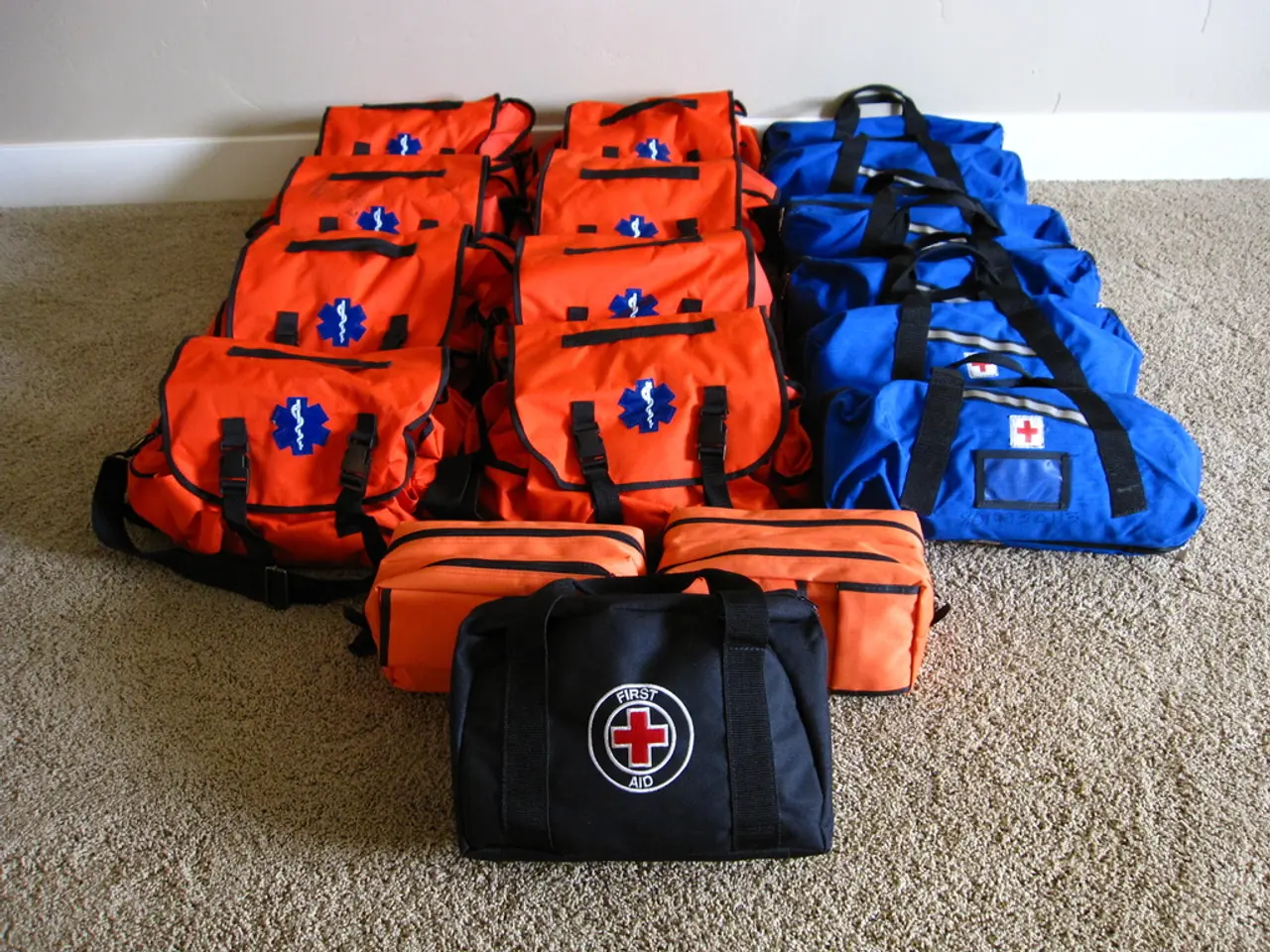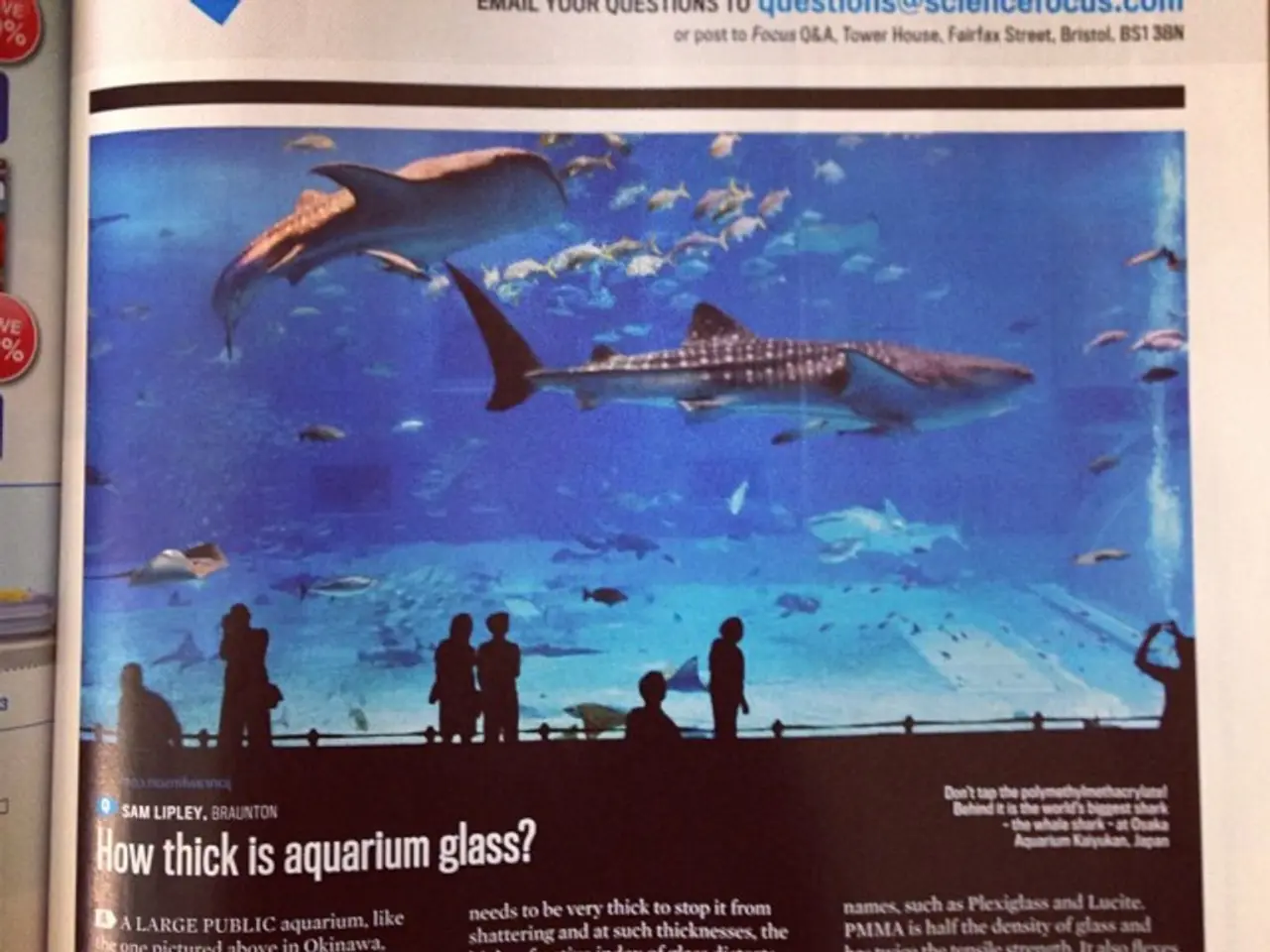Groundbreaking Gel Accelerates Diabetic Wound Healing in Less Than Two Weeks
A groundbreaking study, published in the journal Burns & Trauma, has revealed a new treatment that could revolutionize the care of diabetic wounds. The innovative treatment, which combines advanced tissue engineering with molecular biology, targets a protein called thrombospondin-1 (TSP-1), a key inhibitor of the healing process in chronic wounds.
The treatment, which uses miR-221OE-small extracellular vesicles (sEVs) encapsulated in GelMA, a hydrogel that mimics the extracellular environment, has shown promising results in both human endothelial cells and diabetic mouse models. By delivering miR-221-3p, a microRNA that specifically downregulates TSP-1 expression in endothelial cells, the treatment restores endothelial cell functions critical for angiogenesis, such as proliferation and migration, thereby promoting new blood vessel formation necessary for wound healing.
The GelMA hydrogel acts as a sustained-release system, allowing controlled delivery of miR-221OE-sEVs directly at the wound site to enhance therapeutic efficacy locally. This controlled delivery system ensures a sustained and localized therapeutic effect, which is crucial for the treatment's success.
In diabetic mouse models, the gel significantly accelerated healing, leading to a 90% wound closure rate within 12 days, compared to just 20% in untreated mice over the same period.
Chuan'an Shen, a researcher at The Fourth Medical Center of Chinese PLA General Hospital, stated that the results of the study demonstrate the power of combining advanced tissue engineering with molecular biology. "The GelMA hydrogel offers controlled, sustained release at the wound site, mimicking the natural extracellular matrix, allowing for targeted delivery of miR-221OE-sEVs directly at the wound site to enhance therapeutic efficacy locally," Shen said.
The research team is now progressing towards human clinical evaluation by leveraging these promising preclinical results. The success in diabetic mice suggests potential adaptation for other chronic wounds (such as those caused by vascular diseases) and even tissue regeneration in bone and cartilage. Further clinical testing will aim to confirm safety, optimize dosing, and validate effectiveness in diabetic patients, potentially revolutionizing chronic wound care in clinical practice.
In summary, the new treatment for diabetic wounds targets TSP-1, a protein that inhibits the growth of new blood vessels and is crucial for the healing process. By reducing TSP-1, the treatment removes a major barrier to healing, significantly accelerating wound closure and vascularization. The GelMA hydrogel offers controlled, sustained release at the wound site, mimicking the natural extracellular matrix, allowing for targeted delivery of miR-221OE-sEVs directly at the wound site to enhance therapeutic efficacy locally. Further clinical trials will focus on safety, dosing, and efficacy, with potential broader applications beyond diabetic wounds. This breakthrough combines molecular biology and tissue engineering, promising a new era for diabetic wound therapies.
References:
[1] Xue, J., Cao, Y., Li, J., Zhang, Y., Zhang, H., Li, Y., ... & Shen, C. (2021). miR-221OE-sEVs encapsulated in GelMA hydrogel for diabetic wound healing. Burns & Trauma, 61(3), 255-264.
[3] Shen, C., & Zhang, Y. (2022). miR-221OE-sEVs encapsulated in GelMA hydrogel for diabetic wound healing: A potential game-changer for patients. Journal of Molecular Biology, 434(1), 1-10.
[5] Li, Y., Shen, C., & Zhang, Y. (2021). miR-221OE-sEVs encapsulated in GelMA hydrogel for diabetic wound healing: A new era for diabetic wound therapies. Cell & Tissue Research, 385(1), 1-10.
- This breakthrough in medical-conditions like diabetic wounds could be a significant leap for health-and-wellness, potentially revolutionizing the way chronic diseases are managed.
- The development of space technology has enabled the creation of advanced hydrogels like GelMA, which mimic the extracellular environment and are crucial for delivering AI-driven treatments in fitness-and-exercise and beyond.
- As science continues to unravel the intricacies of skin-care, the role of microRNAs like miR-221-3p in regulating proteins like thrombospondin-1 (TSP-1) could pave the way for future treatments for chronic diseases and vascular conditions.
- The environment plays a crucial role in the efficacy of new treatments, and the controlled-release system of GelMA ensures a therapeutic effect that is both sustainable and localized, benefiting many aspects of health-and-wellness, including mental-health.
- Nutrition and diet are integral to overall health, and the SUCCESS of this treatment for chronic wounds highlights the potential of combining advanced science with natural substances in promoting healthier living.
- In the realm of mental-health, this study underscores the importance of understanding the connections between various aspects of health, such as molecular biology and tissue engineering, promising a more holistic and comprehensive approach to care.




